coolant reservoir TOYOTA LAND CRUISER 2012 Owners Manual
[x] Cancel search | Manufacturer: TOYOTA, Model Year: 2012, Model line: LAND CRUISER, Model: TOYOTA LAND CRUISER 2012Pages: 692, PDF Size: 29.3 MB
Page 502 of 692
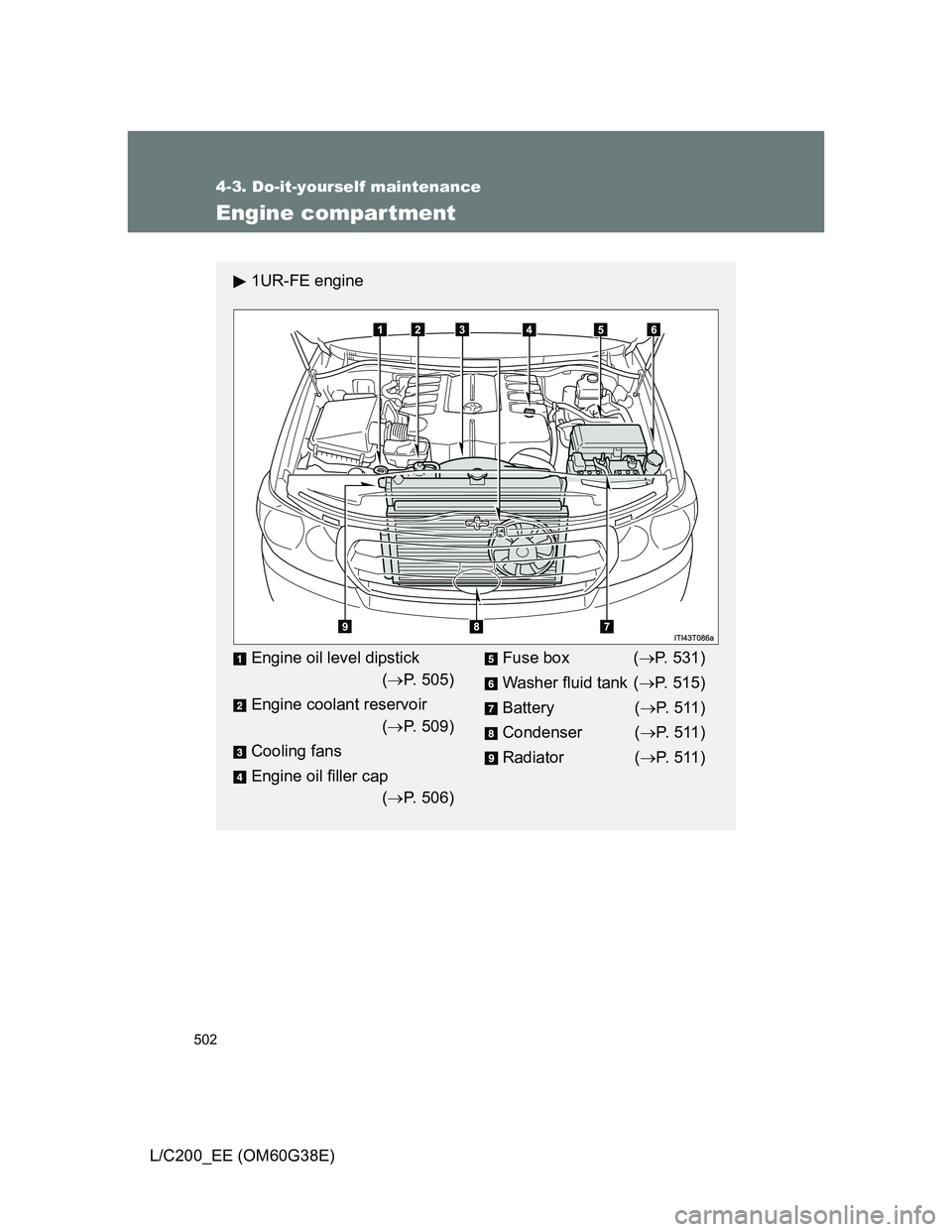
502
4-3. Do-it-yourself maintenance
L/C200_EE (OM60G38E)
Engine compartment
1UR-FE engine
Engine oil level dipstick
(P. 505)
Engine coolant reservoir
(P. 509)
Cooling fans
Engine oil filler cap
(P. 506)Fuse box (P. 531)
Washer fluid tank (P. 515)
Battery (P. 5 11 )
Condenser (P. 5 11 )
Radiator (P. 5 11 )
Page 503 of 692
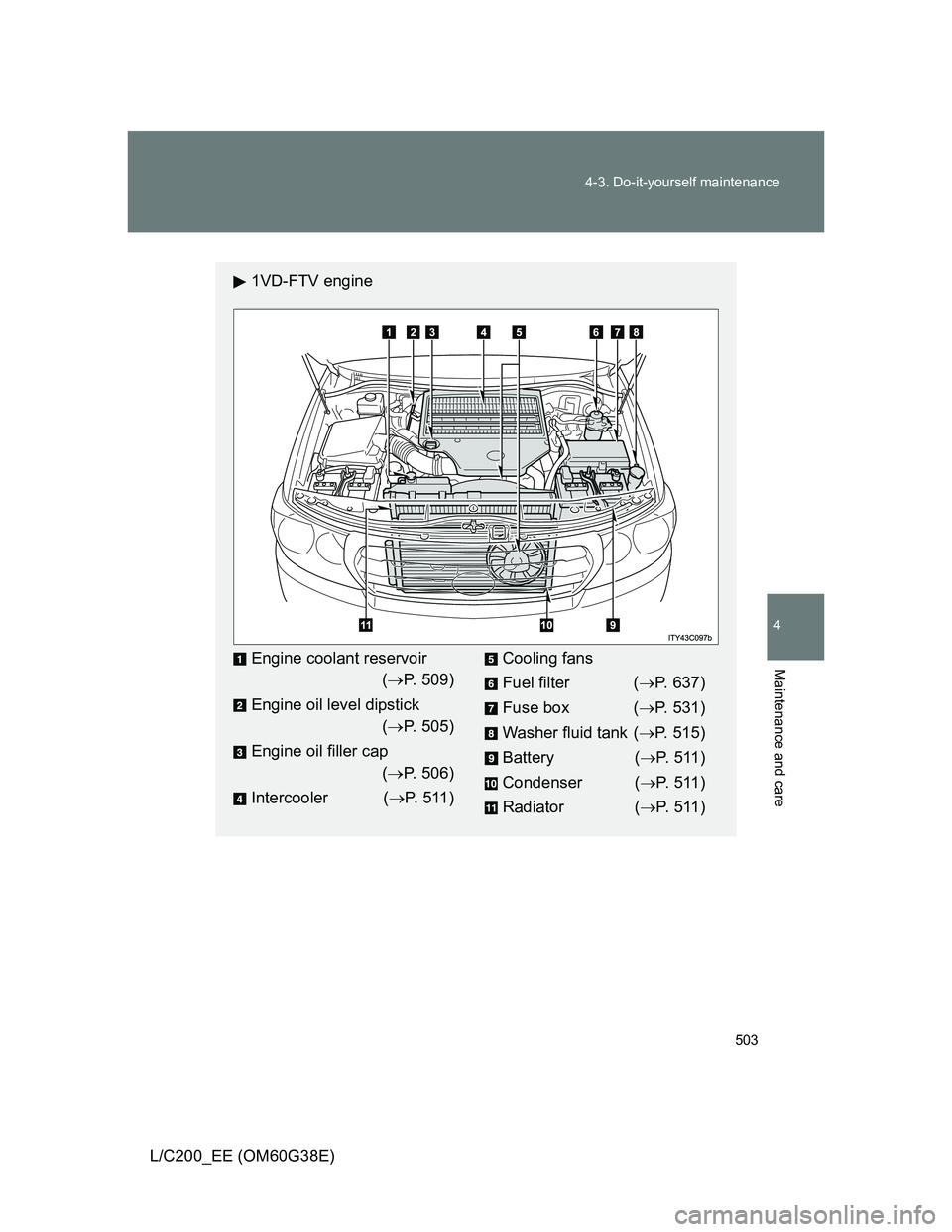
503 4-3. Do-it-yourself maintenance
4
Maintenance and care
L/C200_EE (OM60G38E)
1VD-FTV engine
Engine coolant reservoir
(P. 509)
Engine oil level dipstick
(P. 505)
Engine oil filler cap
(P. 506)
Intercooler (P. 5 11 )Cooling fans
Fuel filter (P. 637)
Fuse box (P. 531)
Washer fluid tank (P. 515)
Battery (P. 5 11 )
Condenser (P. 5 11 )
Radiator (P. 5 11 )
Page 509 of 692
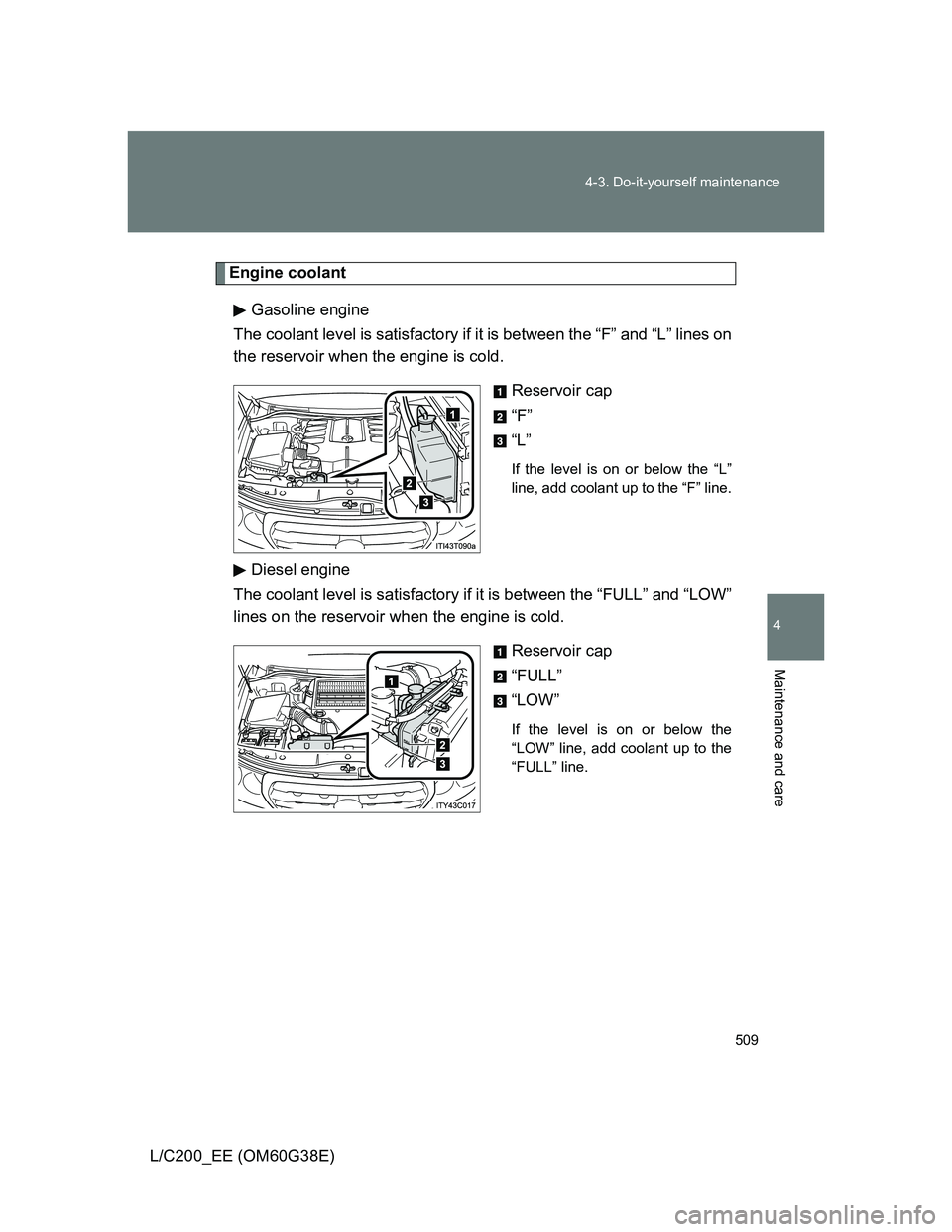
509 4-3. Do-it-yourself maintenance
4
Maintenance and care
L/C200_EE (OM60G38E)
Engine coolant
Gasoline engine
The coolant level is satisfactory if it is between the “F” and “L” lines on
the reservoir when the engine is cold.
Reservoir cap
“F”
“L”
If the level is on or below the “L”
line, add coolant up to the “F” line.
Diesel engine
The coolant level is satisfactory if it is between the “FULL” and “LOW”
lines on the reservoir when the engine is cold.
Reservoir cap
“FULL”
“LOW”
If the level is on or below the
“LOW” line, add coolant up to the
“FULL” line.
Page 510 of 692
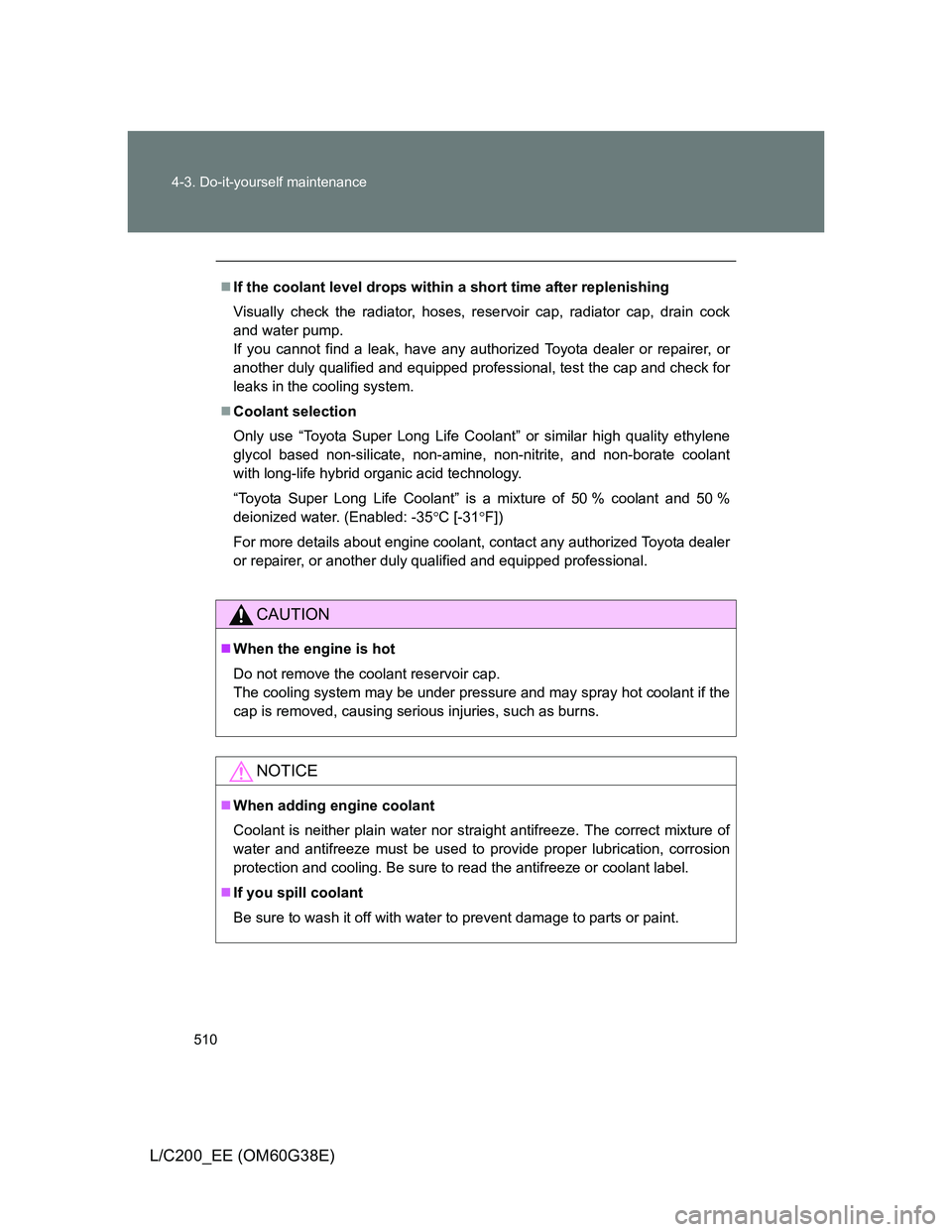
510 4-3. Do-it-yourself maintenance
L/C200_EE (OM60G38E)
If the coolant level drops within a short time after replenishing
Visually check the radiator, hoses, reservoir cap, radiator cap, drain cock
and water pump.
If you cannot find a leak, have any authorized Toyota dealer or repairer, or
another duly qualified and equipped professional, test the cap and check for
leaks in the cooling system.
Coolant selection
Only use “Toyota Super Long Life Coolant” or similar high quality ethylene
glycol based non-silicate, non-amine, non-nitrite, and non-borate coolant
with long-life hybrid organic acid technology.
“Toyota Super Long Life Coolant” is a mixture of 50 % coolant and 50 %
deionized water. (Enabled: -35C [-31F])
For more details about engine coolant, contact any authorized Toyota dealer
or repairer, or another duly qualified and equipped professional.
CAUTION
When the engine is hot
Do not remove the coolant reservoir cap.
The cooling system may be under pressure and may spray hot coolant if the
cap is removed, causing serious injuries, such as burns.
NOTICE
When adding engine coolant
Coolant is neither plain water nor straight antifreeze. The correct mixture of
water and antifreeze must be used to provide proper lubrication, corrosion
protection and cooling. Be sure to read the antifreeze or coolant label.
If you spill coolant
Be sure to wash it off with water to prevent damage to parts or paint.
Page 636 of 692
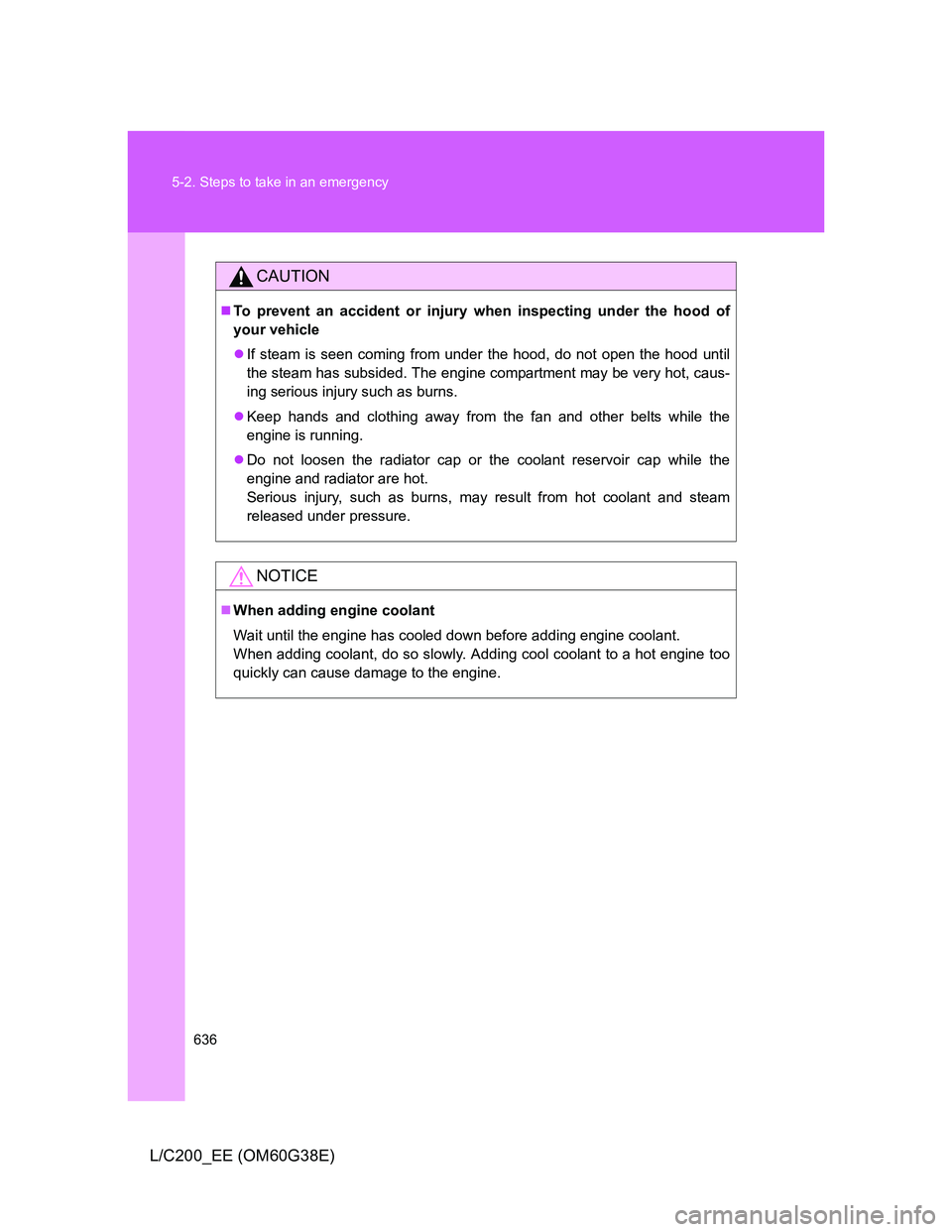
636 5-2. Steps to take in an emergency
L/C200_EE (OM60G38E)
CAUTION
To prevent an accident or injury when inspecting under the hood of
your vehicle
If steam is seen coming from under the hood, do not open the hood until
the steam has subsided. The engine compartment may be very hot, caus-
ing serious injury such as burns.
Keep hands and clothing away from the fan and other belts while the
engine is running.
Do not loosen the radiator cap or the coolant reservoir cap while the
engine and radiator are hot.
Serious injury, such as burns, may result from hot coolant and steam
released under pressure.
NOTICE
When adding engine coolant
Wait until the engine has cooled down before adding engine coolant.
When adding coolant, do so slowly. Adding cool coolant to a hot engine too
quickly can cause damage to the engine.